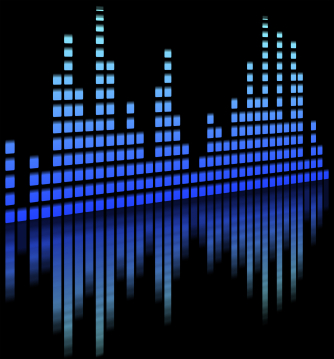There are times when I have been asked “What is the best microphone for ____”. Unfortunately, the answer is not exactly that simple and not one size fits all.
Consider this example. You have a space with a person talking, and a microphone positioned on the other side of room. Let’s also say you have a set of headphones and everything is connected to mixer. The person speaking is not going to be very loud by the time the audio reaches the microphone, but you can easily compensate by increasing the microphone gain. Since you’re wearing headphones there no problems of feedback and if you increase the headphone level there is a pretty good chance you may be able to hear what they are saying. If you wanted, you could even record this signal or broadcast it somewhere.
Ok, you can hear the person talking… What’s the problem?
The problem is that the intelligibility of speech will not be very good. As you turn up the headphones you will start hearing a lot of background noise. Some of that may consist of the audio circuitry, but let’s focus on the background noise caused by the room itself. If there is nobody else in the room, the main thing that you will hear is artifacts of reflected sound against hard surfaces in the space. You will hear speech but the sound waves are bouncing off of multiple objects and arriving at the microphone from all over the place. It will be hard to understand what is being said. Almost all microphones will have the same poor performance in this example. Certain mics might have more sensitivity and be able to produce more volume out of the person talking, but in making the speech louder, the background and reflected sound also gets louder.
Often times, the positioning of the microphone and the acoustic properties of the room itself have much more impact on intelligibility than the microphone itself.
A microphone has a transducer element which has some directional to it – this is referred to as the pick up pattern. I think a lot of people assume that a microphone operates like a camera lens – focusing in on certain sounds and make them louder than others. This is not the case. In reality, a better analogy of a microphone pick up pattern is to think of what happens when you look at a picture on a well. Despite the fact that your eyes are focused in on the picture, you still have some peripheral vision. In much the same way for a microphone, sounds coming from outside of the pickup pattern are rejected more than sounds in the pick up pattern but not completely turned off. A microphone itself does not have a ”zoom lens” and you can still pick up some level of ambient noise from outside the pickup pattern.
The closer the microphone is to the person talking, the less background noise it is picking up; that is just simple physics. I use this example to illustrate that there is no “silver bullet” microphone that is leaps and bounds above the others. In saying this, please note that there are some new microphone technologies coming out recently that employ line array techniques. This does in fact allow a bit of a “zoom in” effect. If you would like more information on this technology please refer to the manufacturers that are breaking new ground on this technology.
Another performance enhancement is eliminating the reflected sound. This is done with acoustic treatment of a room, usually fabric wall surfaces and hanging sound baffles. The challenge with acoustical modifications (aside from the added cost) is that a “dead” sounding room is not always desired for reasons of aesthetics as well as the “feel” of the room itself. If you ever walk into a really dead room, you will know what I’m talking about. It definitely feels unnatural, and maybe even a bit eerie. You would have trouble hearing people talking across the room since there are less ways for the sound to get to your ears.
Going back to the previous example, ceiling microphones suffer from much of the same problem that we discussed. When you hang microphone from the ceiling, it is closer to ambient noises than people talking. DSP units can add some level of noise reduction to eliminate artifacts but there is only so much that can be done. The best performing ceiling microphone systems are in rooms that are acoustically designed to deaden reflections. Anything that you can do to get the ceiling microphone closer to the person talking will increase the sound quality. This is one of the reasons that ceiling microphones which hang down from the ceiling about 3-6″ work quite well as they are closer to the talkers. (unfortunately the aesthetics can be a challenge here)



